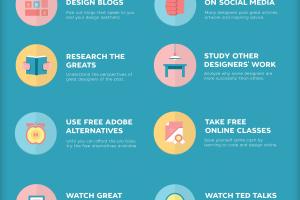Mastering Web Design: Your Comprehensive Guide to Learning in 2023

-
Quick Links:
- Introduction
- What is Web Design?
- Importance of Web Design
- Basic Principles of Web Design
- Essential Tools for Web Design
- Learning Resources
- Step-by-Step Guide to Learning Web Design
- Case Studies
- Expert Insights
- FAQs
Introduction
In the digital age, web design has become a vital skill. Whether you're a business owner looking to create an online presence or an aspiring designer seeking a career in tech, learning web design can open numerous doors. This comprehensive guide aims to provide you with everything you need to know about learning web design, from the basics to advanced concepts.
What is Web Design?
Web design encompasses the visual and functional aspects of a website. It involves planning, creating, and updating the layout, colors, fonts, images, and structure of a site. The goal is to create an aesthetically pleasing and user-friendly experience.
Importance of Web Design
Good web design is essential for several reasons:
- User Experience: A well-designed website improves user engagement and satisfaction.
- Branding: Effective design reinforces your brand’s identity.
- SEO: Search engines favor well-structured websites, impacting your visibility.
- Conversion Rates: Good design can lead to higher conversion rates, boosting sales.
Basic Principles of Web Design
Understanding the fundamental principles of web design is crucial. Here are some key concepts:
- Balance: Create a sense of equilibrium in your design.
- Contrast: Use contrasting colors and elements to draw attention.
- Alignment: Proper alignment enhances organization and flow.
- Repetition: Repeating design elements helps unify the overall look.
- White Space: Provide breathing room to enhance readability.
Essential Tools for Web Design
Several tools can aid in the web design process:
- Design Software: Adobe XD, Sketch, and Figma are popular for designing interfaces.
- Code Editors: Visual Studio Code and Sublime Text are excellent for coding.
- Prototyping Tools: InVision and Axure help in creating interactive prototypes.
- Browser Developer Tools: Use Chrome DevTools for testing and debugging.
Learning Resources
There are numerous resources available to learn web design:
- Online Courses: Platforms like Coursera, Udemy, and Skillshare offer web design courses.
- Books: Titles like "Don't Make Me Think" by Steve Krug are great reads.
- YouTube Channels: Channels such as The Net Ninja and Traversy Media provide valuable tutorials.
- Web Design Blogs: Websites like Smashing Magazine and A List Apart share insights and trends.
Step-by-Step Guide to Learning Web Design
Follow these steps to effectively learn web design:
Step 1: Understand the Basics
Start with basic design principles, HTML, and CSS. Familiarize yourself with how websites are structured and styled.
Step 2: Utilize Online Resources
Enroll in online courses and follow tutorials that suit your learning style. Practice regularly to reinforce your skills.
Step 3: Build Projects
Apply what you’ve learned by creating your own projects. Start small with personal websites or redesign existing ones.
Step 4: Seek Feedback
Share your work with peers or online communities to get constructive feedback. Platforms like Dribbble and Behance are great for showcasing your work.
Step 5: Keep Learning
The web design field is always evolving. Stay updated with trends and technologies by following industry news and participating in webinars.
Case Studies
Examining existing websites can provide insights into effective design strategies. Consider analyzing:
- Airbnb: Their use of imagery and user-friendly layout enhances the user experience.
- Dropbox: The simplicity and clarity in their design effectively convey their message.
- Slack: The intuitive UI and engaging onboarding process exemplify great web design.
Expert Insights
Industry experts emphasize the importance of continuous learning in web design. “The best designers are those who never stop learning and adapting,” says Jane Doe, a renowned web designer. Joining design communities can also provide networking opportunities and mentorship.
FAQs
1. What is the best way to start learning web design?
Begin with online courses and basic tutorials to grasp the fundamentals, then practice by creating projects.
2. Do I need to know how to code to be a web designer?
While not mandatory, knowing HTML and CSS is beneficial for understanding how designs are implemented.
3. How long does it take to learn web design?
It varies by individual but expect to spend several months learning the basics and creating a portfolio.
4. What are the best online resources for learning web design?
Coursera, Udemy, and freeCodeCamp offer excellent courses and materials for learners at all levels.
5. Can I learn web design for free?
Yes, there are many free resources available, including YouTube tutorials and websites like W3Schools.
6. Is web design a good career choice?
Yes, web design is in high demand and offers a variety of career paths, including freelance and agency work.
7. What skills are important for a web designer?
Key skills include creativity, understanding of user experience, proficiency in design software, and basic coding knowledge.
8. How can I improve my web design skills?
Regular practice, seeking feedback, and staying updated with design trends are crucial for improvement.
9. Are there certifications for web design?
Yes, various organizations offer certifications that can enhance your credibility as a web designer.
10. What is the difference between web design and web development?
Web design focuses on the visual and experiential aspects, while web development involves coding and technical implementation.
Random Reads